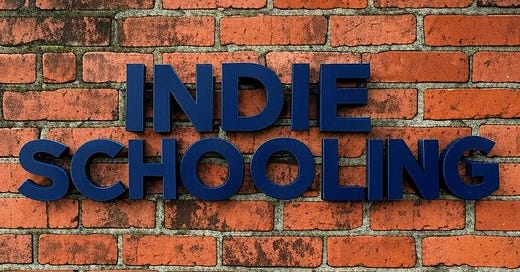The 1970s represented the start of a major shift in the movie business. The old studio system, which had dominated Hollywood for decades, began to give way to a new wave of filmmaker-driven cinema. Directors like Martin Scorsese, Francis Ford Coppola, and Steven Spielberg redefined storytelling, taking creative risks and pushing the boundaries of the medium. They took unconventional approaches at a time when the movie-going audience was ready for alternatives. This shift—often called the New Hollywood movement—brought fresh voices, artistic experimentation, and a break from formulaic filmmaking. It was a move from top-down studio control to an era where visionary, driven auteurs shaped the industry.
I believe a similar shift is taking place in education. For decades, the education system has operated like the mainstream music and film industries did in the middle of the 20th century: a well-oiled, self-perpetuating machine that controls what gets produced, distributed, and consumed. It also determines the roles of individuals inside its walls: determining pay scales, how you teach, what you teach, who has enough seniority to do X, Y, Z, etc.
The result has been a rigid, standardized model that prioritizes uniformity over experimentation and compliance over individuality.
But just as indie film, music, and other art emerged as vibrant alternatives to homogenized, focus-group-informed control, a similar movement is taking root in education: Indie Schooling.
What is Indie Schooling?
I find myself regularly referring to “microschool” as a catch-all for this movement, but I think indie schooling is a better framing.
Indie Schooling is a philosophy of education that embraces independence, innovation, and founder- and family-driven models. These schools operate outside the traditional public and large private school systems, often launched by visionary educators, entrepreneurs, and parents who see a need for something different. Like indie musicians and filmmakers, indie school founders favor more personalized, experimental, and mission-driven models. They are not motivated by being slotted into their predetermined role within a machine, they are driven by a vision and a felt need. And just like a piece of music or film, each option isn’t designed for everyone—but when it appeals to you it can be life changing.
The odd thing is—some of the people who are so moved by a specific movie or piece of music are often the loudest to oppose such niche approaches to education. Why can we promote joy and inspiration in art, but not in education? These people urge us the think outside the box, then oppose any option that doesn’t fit into their box.
While traditional schools must adhere to bureaucratic regulations, standardized curricula, and rigid structures, indie schools are built around flexibility, creativity, and direct community engagement. They prioritize the unique needs of students and families over institutional constraints.
Indie vs. Mainstream: The Education Version
To understand the ethos of indie schooling, consider the parallels with indie music and indie film:
Indie schools often take the form of microschools, cooperatives, hybrid homeschools, low-cost private schools, and other alternative models that have a permission structure to allow founders to start and growth new things.
Why Now? The Cultural Shift Toward Indie Education
The rise of indie schooling is part of a broader cultural shift. Just as people are rejecting soul-crushing homogenization in favor of more artisanal, boutique, local options in all aspects of life, this trend is bleeding into more personalized, local-scale education options. The pandemic accelerated this trend, exposing the limitations of traditional schooling and inspiring thousands of parents and educators to take matters into their own hands. People started asking, “what type of education do I want?”
And to be clear—being indie doesn’t mean you’re a “type.” It means you have the power to create something as an auteur: whether classical, self-directed, Montessori, project-based, and so on. You express your taste through your vision. (Heaven forbid we have taste within the world of education!)
Additionally, the barriers to starting a school are lower than ever. With access to open-source curriculum, digital learning tools, and flexible regulatory environments in some states, founders no longer need permission from large institutions to create meaningful learning experiences. Much like how indie musicians can release an album without a record deal, or how filmmakers can distribute their work through streaming platforms, indie school founders can now design and launch educational models that fit their vision with far fewer barriers to entry.
The Future of Indie Schooling
Indie Schooling isn’t just about smaller class sizes or alternative teaching methods—it’s a mindset. It’s about agency, creativity, and rejecting the notion that education is best left to centralized authorities.
Indie schooling is still in its early stages, but its growth signals a fundamental shift in how we think about education. Just as indie music and indie film reshaped their industries, indie schooling is challenging long-held assumptions about what school must look like.
The question is no longer “Can schools be different?” but rather “How many different kinds of schools can we create?”
The future of education doesn’t belong to a single, dominant system. It belongs to the risk-taking founders who refuse to accept the status quo.
Are you ready to go indie?




Well said!